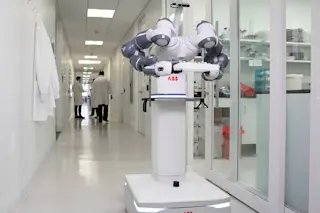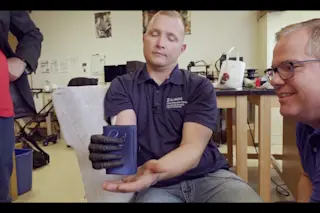High-frequency sound can kill microscopic pathogens, but the sound waves normally need to travel through a contact medium such as water or gel, limiting the use of ultrasound as a germicide. Mahesh Bhardwaj of Ultran Laboratories in Pennsylvania has found a way around this limitation. In collaboration with researchers at Pennsylvania State University, he built a device that transmits ultrasound through air, a feat long thought impossible because the waves dissipate rapidly in a gas.
His solution was startlingly simple: After years of experimentation, Bhardwaj found that a thin layer of compressed fibers, such as paper or cloth, allows a near-total transmission of ultrasound waves. By adding such a layer to the sound source of an ultrasound machine, he was able to destroy 99.9 percent of the spores in a colony of Bacillus thuringiensis, a relative of anthrax, without the use of any contact medium. Bhardwaj is developing a commercial ...














